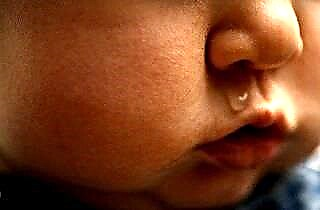Earlobe plastic is a corrective surgery to eliminate congenital and acquired defects in the lower third of the auricle. An uncomplicated surgical procedure can be carried out within the framework of otoplasty, i.e. elimination of protruding ears, or independently. Corrective operations are carried out mainly for cosmetic purposes to eliminate deformations that occur when the earlobe is traumatized or as a result of wearing heavy jewelry.
The earlobe is a fold of skin with a layer of fat that lacks cartilage or bone. Damage to it in most cases leads to the formation of noticeable scars, scars and tears that require correction. Operations to eliminate cosmetic defects do not require careful preparation, therefore, they are contraindicated only in the presence of somatic pathologies and severe chronic diseases.
Indications and contraindications

The absence of cartilage and bone in the earlobe is a key cause of tears and visible sprains. In addition, with age, the elasticity of the skin decreases, which affects the shape of the auricle. Direct indications for plastic surgery are:
- asymmetry of the lobes;
- age-related deformities;
- sprains from wearing earrings;
- large holes from the "tunnels";
- birth defects (bifurcation);
- incorrect anatomical shape;
- ruptures from mechanical damage;
- noticeable scars from punctures and suppurations;
Often, earlobe surgery is required after the so-called facelift. During the surgical removal of skin folds, soft tissues are displaced, as a result of which the earlobes are either protruding or too tightly attached to the head.
Specialists are not recommended to go under the knife to a plastic surgeon if there are the following contraindications:
- impaired blood clotting;
- menstruation in women;
- oncological diseases;
- infectious diseases;
- somatic pathologies.

Training
Before any surgical intervention, the patient must undergo a thorough examination with the delivery of standard tests that identify pathologies and possible contraindications. When planning a plastic surgery, the patient undergoes a consultation with a general practitioner and an otosurgeon, who will subsequently eliminate cosmetic defects.
Important! About a week before the operation, you need to stop taking medications that affect the chemical composition of the blood and its coagulability.
Surgical procedures are performed under local anesthesia and take no more than 30 minutes in total. If the patient's ear lobe comes off as a result of injury or wearing "tunnels", the duration of the procedure will be about an hour and a half. Plastic surgery is performed on an outpatient basis, therefore, within a few hours after completing all the necessary manipulations and leaving the anesthesia, the patient can go home.
Operation
At the initial stage of the surgical procedures, the otosurgeon makes an incision in the area of the fold formed between the earlobe and the neck. In connection with the type of defect, there are several methods of plastic surgery:
- when sagging: an incision is made on the inside of the earlobe through which excess adipose tissue and skin are removed;
- in case of rupture: the edges of the damaged tissues are sutured by means of interrupted sutures (laser resurfacing is subsequently performed to remove scars);
- with asymmetry: the otosurgeon excises excess tissue, due to which the shape of the earlobe is corrected;
- with protrusion: the specialist removes part of the earlobe and through the incision in the back part slightly displaces the cartilaginous tissue in the lower part of the auricle;
 in the absence of an earlobe: during the operation, the otosurgeon recreates the earlobe from the tissues located in the area of the auricle.
in the absence of an earlobe: during the operation, the otosurgeon recreates the earlobe from the tissues located in the area of the auricle.
To sew up the earlobe, plastic surgeons use special thin threads that practically do not injure the tissues, therefore they do not leave visible traces. If there are serious injuries after the rehabilitation period, the patient is offered to undergo resurfacing to remove visible scars and adhesions.
Postoperative period
Upon completion of surgical procedures, a plaster bandage is glued to the operated ear, which prevents sutures from diverging and moisture ingress. Already 2-3 hours after the procedure and after leaving the anesthesia, the patient can return home. During the rehabilitation period, experts recommend adhering to the rules that guarantee the absence of possible complications:
- the bandage must be worn for 10 days without removing;
- to relieve pain, you need to take drugs recommended by your doctor;
- in the first month of rehabilitation, it is undesirable to use alcoholic beverages and cigarettes;
- repeated puncture of the operated earlobe can be done no earlier than 3 months after the surgery.
After a week, the patient is removed the postoperative sutures and the results of the surgical treatment are visually assessed. In case of cosmetic defects caused by the formation of keloid scars, laser resurfacing can be used on the recommendation of a specialist.
To prevent the development of bacteria on the operated skin area, doctors recommend taking a weekly course of antibiotic therapy using systemic drugs. They will eliminate the activity of opportunistic microbes in the body and prevent the occurrence of abscesses.
Failure to follow the rules can lead to complications. The most common ones include:
- swelling;
- hematomas;
- headache;
- suppuration.
The occurrence of the above complaints is the basis for seeking help from a specialist. Ignoring complications can lead to tissue necrosis and the development of an abscess.

 in the absence of an earlobe: during the operation, the otosurgeon recreates the earlobe from the tissues located in the area of the auricle.
in the absence of an earlobe: during the operation, the otosurgeon recreates the earlobe from the tissues located in the area of the auricle.

